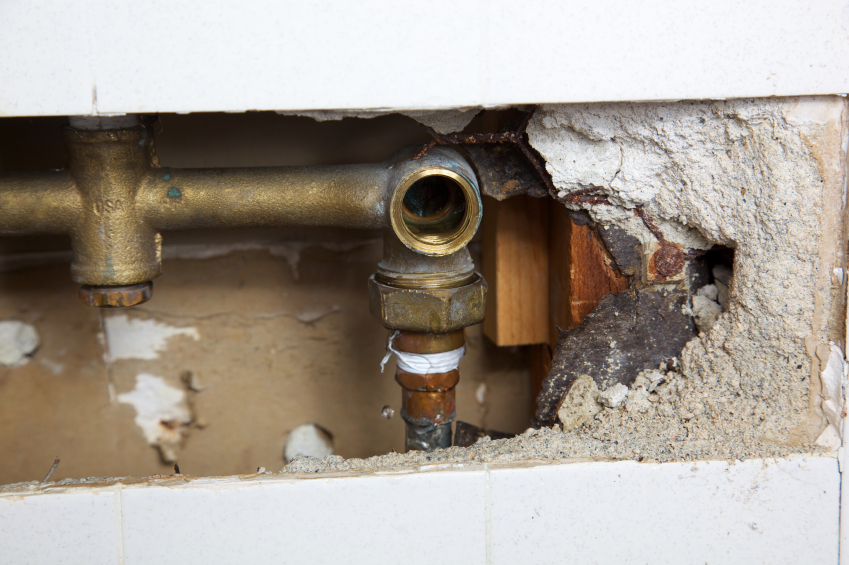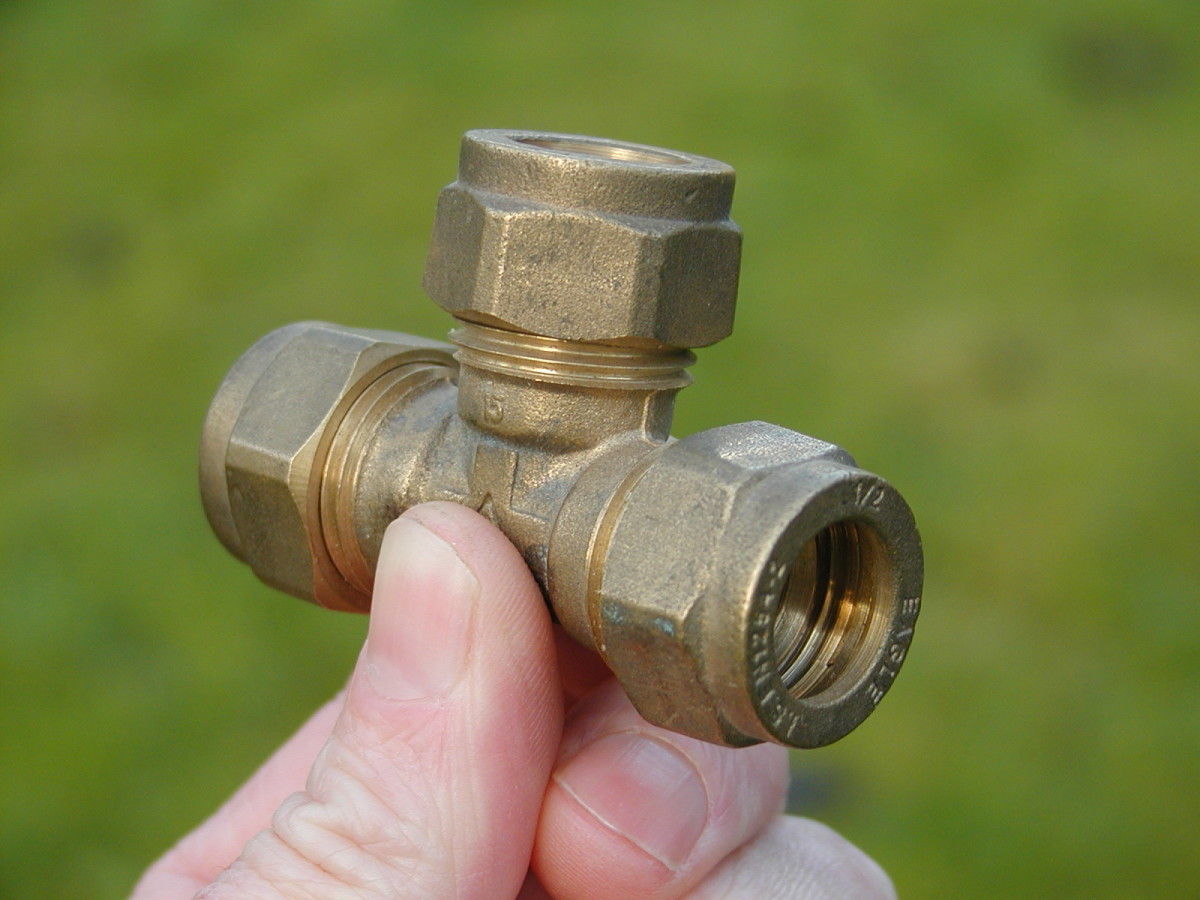Identifying and Addressing the Reasons of Unwanted Noise in Your Plumbing System in Your Residence
Identifying and Addressing the Reasons of Unwanted Noise in Your Plumbing System in Your Residence
Blog Article
They are making a number of good points on the subject of Why Do My Pipes Make Noises as a whole in the content below.

To identify loud plumbing, it is essential to determine initial whether the unwanted noises take place on the system's inlet side-in other words, when water is turned on-or on the drain side. Sounds on the inlet side have actually varied causes: excessive water pressure, used shutoff as well as tap components, improperly connected pumps or various other devices, inaccurately placed pipeline bolts, and also plumbing runs including a lot of limited bends or other restrictions. Noises on the drain side generally originate from poor location or, as with some inlet side sound, a design including tight bends.
Hissing
Hissing sound that takes place when a faucet is opened somewhat usually signals excessive water stress. Consult your regional water company if you suspect this issue; it will certainly be able to inform you the water stress in your area and also can install a pressurereducing valve on the inbound water supply pipe if essential.
Thudding
Thudding sound, typically accompanied by shivering pipelines, when a faucet or appliance valve is shut off is a condition called water hammer. The noise as well as resonance are brought on by the resounding wave of stress in the water, which instantly has no area to go. Occasionally opening up a valve that discharges water promptly into an area of piping containing a constraint, elbow joint, or tee installation can produce the same condition.
Water hammer can generally be cured by mounting fittings called air chambers or shock absorbers in the plumbing to which the problem shutoffs or faucets are connected. These tools enable the shock wave developed by the halted flow of water to dissipate in the air they consist of, which (unlike water) is compressible.
Older plumbing systems may have brief vertical areas of capped pipe behind wall surfaces on faucet competes the same function; these can eventually full of water, reducing or ruining their performance. The cure is to drain pipes the water supply completely by turning off the major water system valve and also opening up all faucets. After that open the major supply valve and also close the taps one at a time, starting with the tap nearest the valve and also ending with the one farthest away.
Chattering or Shrilling
Intense chattering or shrieking that occurs when a shutoff or faucet is switched on, which typically goes away when the fitting is opened completely, signals loosened or malfunctioning internal parts. The option is to replace the valve or tap with a brand-new one.
Pumps as well as appliances such as washing machines and dishwashers can transfer motor noise to pipelines if they are incorrectly attached. Link such things to plumbing with plastic or rubber hoses-never inflexible pipe-to isolate them.
Various Other Inlet Side Noises
Creaking, squeaking, scraping, snapping, and tapping usually are triggered by the expansion or contraction of pipes, generally copper ones supplying hot water. The noises occur as the pipes slide against loose fasteners or strike neighboring home framing. You can frequently determine the area of the problem if the pipelines are subjected; just comply with the sound when the pipelines are making noise. More than likely you will discover a loose pipeline hanger or a location where pipes exist so near floor joists or other mounting items that they clatter versus them. Connecting foam pipeline insulation around the pipes at the point of get in touch with must correct the issue. Be sure bands as well as wall mounts are protected and also offer ample support. Where feasible, pipe fasteners need to be attached to large structural aspects such as structure walls instead of to mounting; doing so decreases the transmission of vibrations from plumbing to surfaces that can magnify and also move them. If attaching fasteners to framing is inevitable, cover pipelines with insulation or various other resistant product where they contact fasteners, and sandwich the ends of brand-new bolts in between rubber washers when installing them.
Dealing with plumbing runs that suffer from flow-restricting limited or many bends is a last option that needs to be carried out just after getting in touch with a proficient plumbing professional. However, this circumstance is rather typical in older residences that may not have been constructed with indoor plumbing or that have seen numerous remodels, especially by amateurs.
Drain Sound
On the drain side of plumbing, the chief goals are to get rid of surfaces that can be struck by dropping or rushing water and to shield pipelines to include inevitable sounds.
In brand-new construction, bath tubs, shower stalls, bathrooms, and also wallmounted sinks as well as containers should be set on or versus resistant underlayments to decrease the transmission of audio through them. Water-saving bathrooms and also taps are less noisy than traditional designs; install them instead of older types even if codes in your area still allow making use of older components.
Drainpipes that do not run vertically to the cellar or that branch right into horizontal pipeline runs supported at flooring joists or various other mounting existing especially bothersome sound issues. Such pipes are large enough to radiate substantial resonance; they additionally bring considerable amounts of water, which makes the scenario even worse. In new construction, define cast-iron dirt pipes (the large pipelines that drain pipes bathrooms) if you can afford them. Their enormity consists of much of the sound made by water travelling through them. Likewise, prevent routing drainpipes in walls shown bedrooms and rooms where individuals collect. Wall surfaces containing drains need to be soundproofed as was defined earlier, utilizing double panels of sound-insulating fiberboard and also wallboard. Pipes themselves can be wrapped with unique fiberglass insulation created the purpose; such pipes have a resistant plastic skin (in some cases consisting of lead). Outcomes are not constantly acceptable.
Pipe Down! What to Do About Noisy Water Pipes
Banging
Does it sound like someone's hitting your pipes with a hammer every time you run water? The issue could be a phenomenon called water hammer, which happens when a water valve closes suddenly. You'll often hear it when your washing machine stops filling, for example. The momentum and pressure from the water flowing toward the valve create the shockwave that causes the banging noise when the valve closes suddenly. It might not seem like a big deal, but water hammer can cause damage to your pipes, including leaks and joint damage.
One way to ease water hammer is by installing water hammer arrestors. Your plumber can install them near major valves to help cushion the shock of the water when it suddenly stops or changes direction. You might also need to reduce the water pressure coming into your home with the pressure-reducing valve.
Gurgling
Gurgling sounds typically come from drainpipes. This sound happens when the water can't drain properly, usually when there's a clog in the water pipes. Drain clogs often happen due to hair, grease, soap scum or objects that fall down the drain. They can happen suddenly or build up slowly over time.
You can sometimes clear a clogged drainpipe with a plunger to help force the clog through the pipe. A plumbing snake or an auger can also help break up tough clogs. A common plumbing myth is that chemical drain cleaners are safe and effective, but they often don't work and contain harsh chemicals that can hurt you and your plumbing. If you can't remove the clog with a plunger or snake, it's best to call a plumber to help.
Rattling
Water travels through your pipes with lots of pressure, so the pipes are bound to move a little. Pipes should be secured well to keep them from moving too much when water runs through them. If they're not properly fastened or the fasteners come loose, you might hear them rattling when you run water.
Resecuring the pipes can cut down on the rattling noise and prevent damage to the joints of the water pipes. However, many pipes run behind walls where you can't easily access them. A plumber can help determine if loose fasteners are the cause of the rattling and resecure them if necessary.
Humming
If your pipes sound like they're humming, it's likely a water pressure issue. When the water pressure is high, it can cause the water pipes to vibrate and create a humming sound. High water pressure is more common if you have a well for your water, but it can happen with municipal water as well. High water pressure can damage your plumbing and cause leaks.
If you have a well, check the pressure to ensure it's below 55 pounds per square inch. A plumber can test the pressure for you and help adjust the issue if you're not sure how to do it yourself. If you're connected to the municipal water source, your home likely has a pressure-reducing valve near where the water enters your home. You can adjust the screw in the valve to decrease the pressure, but be careful not to lower it too much.
Squeaking
Squeaking or squealing is another common sound you'll hear in your water pipes. This often happens if small components within the plumbing, such as washers or aerators, become loose, dirty or damaged. When this is the cause, the squeaking sound is usually confined to a certain fixture or area of plumbing. Replaced or repairing the part should solve the noise.
If you can hear the squealing sound everywhere in your home, it could be an issue with water pressure. Buildup in the pipes narrows the space for the water, which can cause squealing as the water tries to squeeze through the pipes. Wear and tear on the plumbing system can also cause whistling or squeaking. These situations typically require a professional plumber to diagnose and repair.
https://www.homeserve.com/en-us/blog/home-improvement/water-pipes-making-noise/

As a serious person who reads about Why Your Water Pipes Are Noisy and How To Shut Them Up, I thought sharing that piece of content was appropriate. Please take a moment to share this blog if you appreciated it. I thank you for reading our article about How To Fix Noisy Pipes.
Get industry-leading emergency plumbing. Report this page